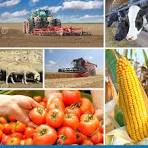Regenerative Agriculture: Restoring Soil Health and Biodiversity
Regenerative agriculture is more than just a buzzword; it’s a transformative approach to farming that focuses on restoring soil health and enhancing biodiversity. As our planet grapples with climate change, soil degradation, and a growing population, regenerative practices offer a sustainable solution that benefits both the environment and food security. In this article, we’ll explore the principles of regenerative agriculture, its practices, benefits, and how it can revolutionize the way we produce food.
What is Regenerative Agriculture?
Regenerative agriculture is a holistic farming approach that aims to improve the health of the soil, increase biodiversity, and restore ecosystems. Unlike conventional agriculture, which often depletes soil nutrients and relies heavily on chemical inputs, regenerative practices emphasize working with nature to enhance agricultural productivity sustainably. This method not only focuses on increasing crop yields but also on rebuilding the natural systems that support farming.

The Core Principles of Regenerative Agriculture
Regenerative agriculture revolves around several key principles:
- Soil Health: Building and maintaining healthy soil is paramount. Healthy soil is rich in organic matter, teeming with microorganisms, and capable of retaining moisture.
- Biodiversity: Enhancing biodiversity—both above and below ground—supports ecosystem resilience. Diverse plant and animal life contribute to nutrient cycling and pest control.
- Water Management: Improving water retention and reducing runoff are crucial for sustainable farming. Healthy soils can absorb more water, reducing the need for irrigation.
- Carbon Sequestration: Regenerative practices help capture carbon dioxide from the atmosphere, mitigating climate change by storing carbon in the soil.
- Community Engagement: Engaging local communities in agricultural practices fosters a sense of ownership and promotes sustainable food systems.
Why is Regenerative Agriculture Important?
Addressing Soil Degradation
Soil degradation is a pressing issue caused by intensive farming practices that strip the land of its nutrients. According to the Food and Agriculture Organization (FAO), around 33% of the world’s soils are degraded. Regenerative agriculture offers a solution by focusing on soil restoration through practices like cover cropping, reduced tillage, and composting.
Enhancing Food Security
As the global population continues to grow, ensuring food security becomes increasingly critical. Regenerative agriculture can produce more resilient crops that withstand extreme weather conditions while improving yields over time. By restoring soil health, farmers can create a sustainable food supply that meets rising demands.
Combating Climate Change
Climate change poses significant challenges to agriculture, including unpredictable weather patterns and increased pest pressures. Regenerative practices can help mitigate these effects by improving soil structure and fertility, enhancing water retention, and promoting biodiversity—all of which contribute to more resilient farming systems.
Key Practices in Regenerative Agriculture
Regenerative agriculture encompasses various practices designed to restore ecosystems while promoting sustainable farming:
1. Cover Cropping

Cover cropping involves planting specific crops during off-seasons to protect and enrich the soil. These crops prevent erosion, enhance soil structure, and increase organic matter when tilled back into the ground.
Benefits of Cover Cropping
- Erosion Control: Cover crops protect against wind and water erosion.
- Nutrient Cycling: They help fix nitrogen in the soil, reducing the need for synthetic fertilizers.
- Biodiversity: Diverse cover crops support various beneficial organisms.
2. No-Till Farming
No-till farming minimizes soil disturbance by avoiding plowing or tilling. This practice helps maintain soil structure, reduces erosion, and enhances moisture retention.
Advantages of No-Till Farming
- Soil Health: Preserves beneficial microorganisms in the soil.
- Carbon Sequestration: Increases carbon storage in the ground.
- Reduced Labor Costs: Less machinery use means lower operational costs.
3. Crop Rotation
Crop rotation involves alternating different crops in a specific sequence over time. This practice prevents pest buildup, enhances nutrient cycling, and improves overall soil health.
Why Crop Rotation Matters
- Pest Management: Rotating crops disrupts pest life cycles.
- Nutrient Balance: Different plants utilize various nutrients from the soil.
- Soil Structure Improvement: Varied root systems enhance soil aeration.
4. Agroforestry
Agroforestry integrates trees into agricultural landscapes, creating diverse ecosystems that benefit both crops and livestock.
Benefits of Agroforestry
- Biodiversity Enhancement: Trees provide habitats for wildlife.
- Microclimate Regulation: Canopies protect crops from harsh weather.
- Soil Improvement: Tree roots stabilize soils and enhance fertility.
5. Managed Grazing
Managed grazing involves rotating livestock through different pasture areas to allow for regrowth while preventing overgrazing.
Key Benefits of Managed Grazing
- Soil Fertility Boost: Manure from livestock enriches the soil.
- Plant Diversity Promotion: Grazing encourages diverse plant growth.
- Erosion Control: Well-managed pastures reduce erosion risks.
The Environmental Impact of Regenerative Agriculture
Restoring Ecosystems
Regenerative agriculture actively works to restore degraded ecosystems by improving biodiversity and enhancing natural habitats. This restoration supports wildlife populations while creating healthier agricultural landscapes.
Improving Water Quality
Healthy soils act as natural filters for water runoff, reducing pollution from agricultural chemicals entering waterways. By minimizing chemical inputs through regenerative practices, farmers contribute to cleaner water sources for communities and ecosystems alike.
Carbon Sequestration Potential
One of the most significant environmental benefits of regenerative agriculture is its potential for carbon sequestration. By building organic matter in soils through practices like cover cropping and no-till farming, regenerative methods can capture substantial amounts of carbon dioxide from the atmosphere.
Economic Benefits of Regenerative Agriculture
Cost Savings on Inputs
By focusing on improving soil health through regenerative practices, farmers can reduce their reliance on synthetic fertilizers and pesticides over time. This leads to significant cost savings while promoting sustainability.
Increased Resilience Against Climate Variability
Farms that adopt regenerative practices tend to be more resilient against climate-related challenges such as droughts or floods. Healthier soils retain moisture better during dry spells while improving drainage during heavy rains—ensuring consistent crop yields year-round.
Accessing New Markets
Consumers are increasingly seeking sustainably produced food options; therefore, farms practicing regenerative agriculture can tap into premium markets that offer higher prices for their products.
Challenges Facing Regenerative Agriculture
While regenerative agriculture offers numerous benefits, it’s not without its challenges:
Initial Investment Costs
Transitioning from conventional to regenerative practices may require upfront investments in new equipment or infrastructure changes—this can be daunting for many farmers already facing financial pressures.
Knowledge Gaps
Many farmers may lack knowledge about regenerative techniques or how best to implement them effectively on their land—education programs are essential for bridging this gap!
Market Access
Finding markets willing to pay premium prices for sustainably produced goods can be challenging; farmers must navigate consumer preferences while building relationships with buyers who value these practices.
The Future of Regenerative Agriculture
As we look ahead at global agricultural trends:
Technological Advancements
Innovations like precision agriculture tools enable farmers to monitor their fields closely—using data-driven insights allows them to optimize their operations while minimizing environmental impacts!
Policy Support
Governments worldwide are beginning to recognize the importance of supporting sustainable agricultural practices through subsidies or grants aimed at promoting regenerative methods—this shift could catalyze broader adoption across sectors!
Community Engagement
Building networks among farmers practicing regenerative techniques fosters collaboration—sharing experiences helps create stronger communities committed to sustainable food production!
See What Eating Egg Will do to your Body: A Nutritional Powerhouse
Conclusion
Regenerative agriculture represents a powerful shift towards more sustainable farming practices that restore soil health while enhancing biodiversity—the benefits extend far beyond individual farms! By adopting these methods collectively across landscapes globally—we can combat climate change effectively while ensuring future generations have access to nutritious food sources! So why not explore how you might incorporate some elements of regenerative agriculture into your own gardening or farming endeavors? Together we can cultivate healthier soils—and ultimately—a healthier planet!
Meta Description
Discover how regenerative agriculture restores soil health & biodiversity through innovative practices that enhance sustainability & combat climate change.
FAQs About Regenerative Agriculture
1. What is regenerative agriculture?
Regenerative agriculture is a holistic approach focusing on restoring soil health, increasing biodiversity, improving water cycles, and enhancing ecosystem services through sustainable farming practices.
2. How does regenerative agriculture benefit the environment?
It improves soil quality by enhancing organic matter content, reduces chemical inputs leading to cleaner water sources, sequesters carbon dioxide from the atmosphere, and restores ecosystems.
3. What are some common practices in regenerative agriculture?
Common practices include cover cropping, no-till farming, crop rotation, agroforestry integration with livestock management techniques like managed grazing.
4. Can I implement regenerative agriculture on my small farm?
Absolutely! Many principles of regenerative agriculture can be adapted for small-scale operations—starting with simple changes like cover cropping or reduced tillage can make a big difference!
5. What resources are available for learning about regenerative agriculture?
Numerous organizations offer training programs or workshops focused on teaching regenerative techniques; online courses also provide valuable information tailored specifically towards farmers

